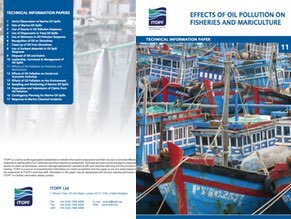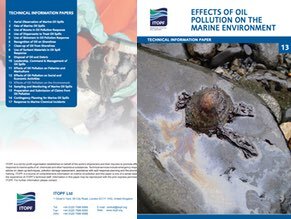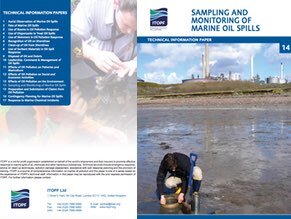Effects in Offshore and Coastal waters
Most oils float on the sea surface where they are spread over a wide area by currents, wind and waves.
Depending on the type of oil, it may disperse into the top few metres of the water column. As a result the potential environmental impacts of oil in open waters are generally confined to this upper area of the water column although, on occasion, some types of oil will sink and environmental impacts may be observed on the seabed. The types of organisms that are commonly impacted in an open sea spill include; plankton, fish, seabirds and marine mammals and reptiles.
Plankton
The upper pelagic zone of seas and oceans support a myriad of planktonic organisms, including bacteria, eggs and larvae, and a variety of animal and plant species. It is well established that plankton is sensitive to oil exposure and consequently short-term impacts should be expected in the immediate vicinity of the oil. However, organisms with planktonic life stages are characteristically present in the plankton in huge numbers and will naturally suffer very high levels of mortality. As a result, a large proportion of a given species will remain unaffected by the spill and it is rare for plankton mortalities following a spill to result in reduced adult populations.
Fish
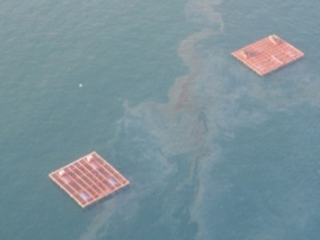
Although the eggs and larvae of fish may be susceptible to the effects of oil, adult fish tend to be more resilient. Reductions in wild fish stocks in offshore and coastal waters following oil spills have rarely been detected, as it is thought that fish can detect unfavourable water conditions and actively swim away to avoid them. Where mass mortalities have occurred, they have been caused by very high, localised concentrations of dispersed oil in shallow or confined waters. Fish mortalities can occur with cultured fish stocks where individuals are unable to actively avoid the oil.
Seabirds
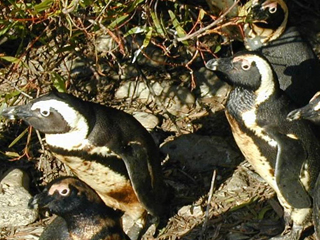
In open water, seabirds are some of the most vulnerable of all animals, and in some incidents large numbers may perish. Fouling of plumage (which is essential for thermoregulation and buoyancy control) is the most visible effect. Although cleaning and rehabilitation of birds may be attempted, success is often linked to the species of bird, and in many cases only a small fraction of those treated will survive. However, it is encouraging that with experience and research, best practices for bird cleaning are emerging and outcomes are improving. Increasingly, oil contingency plans define policies on how to deal with oiled seabirds and wildlife.
Sea Mammals and Reptiles
Due to the tendency of oil to float at the sea surface, marine mammals and reptiles are at risk as they must surface to breathe. The oil can potentially cause harm to nasal tissues and eyes and whilst mortalities caused by oil have been recorded, the majority of mortalities which coincide with oil spills have usually been found to result from other causes. Mammals that rely on fur to regulate body temperature can be vulnerable to the effects of oil as they may be harmed or die from hypothermia or overheating if their fur becomes matted with oil. For marine reptiles, the greatest impact is probably away from the open sea and on their nesting beaches should they become contaminated with oil.
11. Последствия нефтяного загрязнения для рыбного промысла и морского фермерства
В настоящем документе описаны последствия загрязнения нефтью с судов для рыбного промысла и морского фермерства, а также представлены инструкции по мерам реагирования и стратегии управления работами, которые помогут снизить степень воздействия разливов нефти. Ущерб, наносимый другим экономическим ресурсам, рассматривается в отдельном Техническом Информационном Документе.
Categories: Environmental effects, Economic effects, Technical Information Paper (TIPS)
13. Последствия нефтяного загрязнения для окружающей среды
В настоящем документе описываются последствия разливов нефти с морских судов и последующих мероприятий по очистке для флоры, фауны и среды их обитания. Особое внимание уделяется сложному взаимодействию между нефтью и биологическими системами, которое уже много лет является объектом различных исследований. Отдельные документы ITOPF посвящены последствиям нефтяных разливов для рыболовства, морского фермерства и других областей человеческой деятельности.
Categories: Environmental effects, Technical Information Paper (TIPS)
14. Отбор проб и мониторинг морских разливов нефти
В настоящем документе представлен широкий обзор процедур мониторинга и отбора проб, которые можно применять для количественного и качественного анализа и наблюдения за загрязнением нефтью. Тогда как по данным качественного анализа определяется источник загрязнения нефтью, программы мониторинга в основном фокусируются на количественных изменениях в уровнях углеводородов с течением времени. В настоящем документе приведены рекомендации из передовой практики по методам анализа и разъяснена основная терминология. В рамки документа не входит рассмотрение методов и замечаний по наблюдению за конкретными экологическими и биологическими последствиями, а также по наблюдению за загрязняющими веществами в воздухе.
Categories: Environmental effects, Planning & operations, Technical Information Paper (TIPS)

